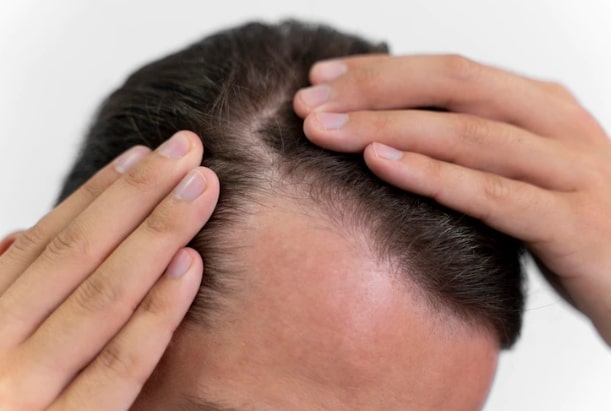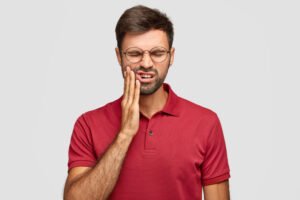Stages of balding
When three key factors—genetics, aging, and hormones—interact, men often experience hair loss. Baldness often appears in males later in life. More over half of white males over 50 exhibit male-pattern hair loss, as seen by significant thinning, a receding hairline, or balding.
Hereditary male pattern baldness doesn’t cause any other visible side effects except hair loss. A change in hair weave, hairpiece, or hairstyle can help hide hair loss. This is generally the least expensive and safest method of treating male pattern baldness.
Let’s talk about the seven stages of balding based on the degree and pattern of hair loss.
1st Stage: Minimal hair loss
There is no noticeable hair loss or receding hairline in this stage. During this stage of hair loss, the hair becomes thinner around the forehead and temples. These are the first signs of baldness. Except for a very small amount of almost perceptible hair loss around the temples, there was no baldness in stage I patients.
2nd Stage: M-shaped hairline
People in Stage 2 have slight signs of a receding hairline, typically around the temples, and are sometimes referred to as being in the “adult” or “mature” hairline phase. Your forehead enlarges and your temples become more noticeable at this point. Even though it is still largely undetectable, the hairline is formed like a M due to the hair loss on the forehead.
3rd Stage: Recession hairline to form M, U & V shapes
Patients start to exhibit a symptom at this point. Baldness is the clinical diagnosis for this. The baldness intensifies in stage three. Your forehead becomes wider and your hairline recedes farther, giving your forehead a “M,” “U,” or “V” shape. Some guys won’t see any more receding. In stage 2, it is quite simple to conceal the fact that you are losing hair. However, level 3 makes it very tough for you to conceal the baldness.
4th Stage: Massive hair loss front of the head
When viewed from above, the hairline has further receded and may be beginning to resemble a “U” shape. If there is a bald patch on top of the head, it is also bigger, but hair is still growing in that area between the bald spot and the receding hairline. Bald patches are becoming more noticeable. Large patches of hair are lost at the front of the head, and the hair on your crown starts to thin.
5th Stage: Horseshoe or U-shaped hairline at the crown of your scalp
The hairline recedes farther and becomes thinner between the bald area and the hairline as a result of excessive hair loss. During this stage, the hairline will often have a horseshoe or U shape. By the time you get to this stage, your hairline has significantly receded. On the Norwood Hamilton Scale, baldness and hair loss reaches stage 5 when they are so extreme.
6th Stage: Visible scalp with enlarged bald patches
On the top and front of the head, balding has developed from hair loss. On the sides and back of the head, hair may still be growing, but the crown and front of the head are now mostly bald. Some people may still have some hair on top of their heads at stage 6, but it will be very thin, fragile, and scattered.
7th Stage: Hairline receded and little thin hair
Baldness spreads to the sides of the head, leaving just a thin ring of hair around the outside of the head. If some hair grows, the growth is scant, and the hairs are thin and fragile. Examine the horseshoe of hair on the bottom part of the head to see if you’ve reached the seventh stage of the Norwood scale. It will have constricted somewhat and may have fallen or dipped, while the hairs inside it will have shrunk, finer, and frailer.
The sooner you treat hair loss, the better the chance of avoiding permanent damage. You can emphasise a diet heavy in nutritious protein, omega-3 fatty acids, and fresh fruits and vegetables to prevent hair loss. If you are happy with your appearance, no treatment is needed. But if you experience extreme hair loss and use the red light therapy devices because it is effective for hair loss, you should see a doctor right away.
Share this content:














Post Comment